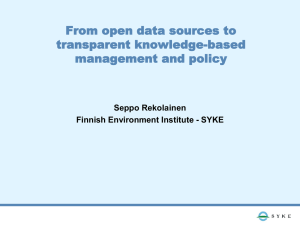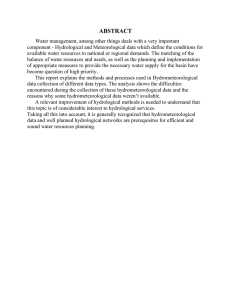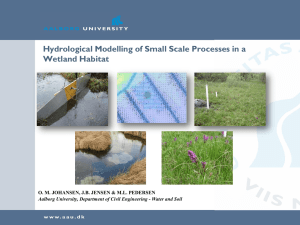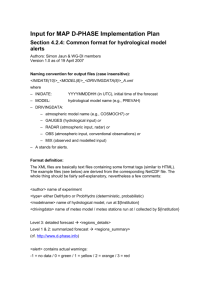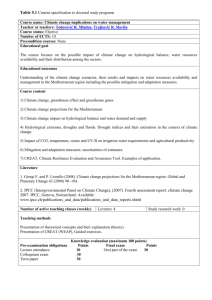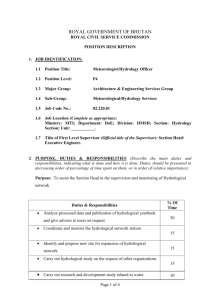Feature detection in hydrological data
advertisement
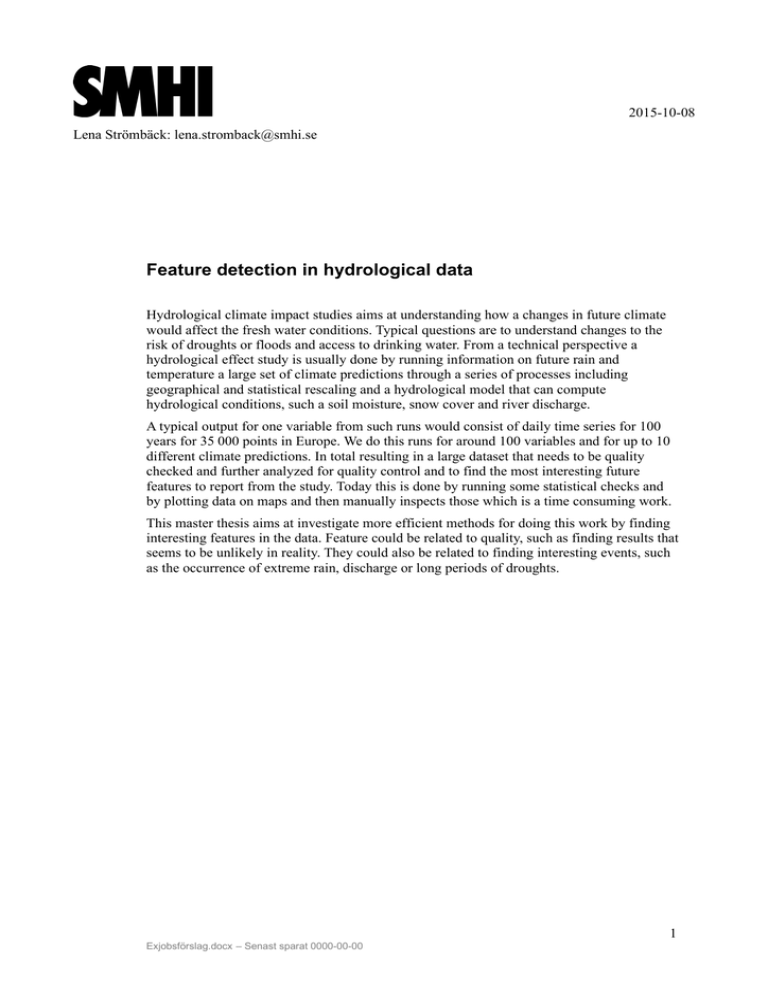
2015-10-08 Lena Strömbäck: lena.stromback@smhi.se Feature detection in hydrological data Hydrological climate impact studies aims at understanding how a changes in future climate would affect the fresh water conditions. Typical questions are to understand changes to the risk of droughts or floods and access to drinking water. From a technical perspective a hydrological effect study is usually done by running information on future rain and temperature a large set of climate predictions through a series of processes including geographical and statistical rescaling and a hydrological model that can compute hydrological conditions, such a soil moisture, snow cover and river discharge. A typical output for one variable from such runs would consist of daily time series for 100 years for 35 000 points in Europe. We do this runs for around 100 variables and for up to 10 different climate predictions. In total resulting in a large dataset that needs to be quality checked and further analyzed for quality control and to find the most interesting future features to report from the study. Today this is done by running some statistical checks and by plotting data on maps and then manually inspects those which is a time consuming work. This master thesis aims at investigate more efficient methods for doing this work by finding interesting features in the data. Feature could be related to quality, such as finding results that seems to be unlikely in reality. They could also be related to finding interesting events, such as the occurrence of extreme rain, discharge or long periods of droughts. 1 Exjobsförslag.docx – Senast sparat 0000-00-00



